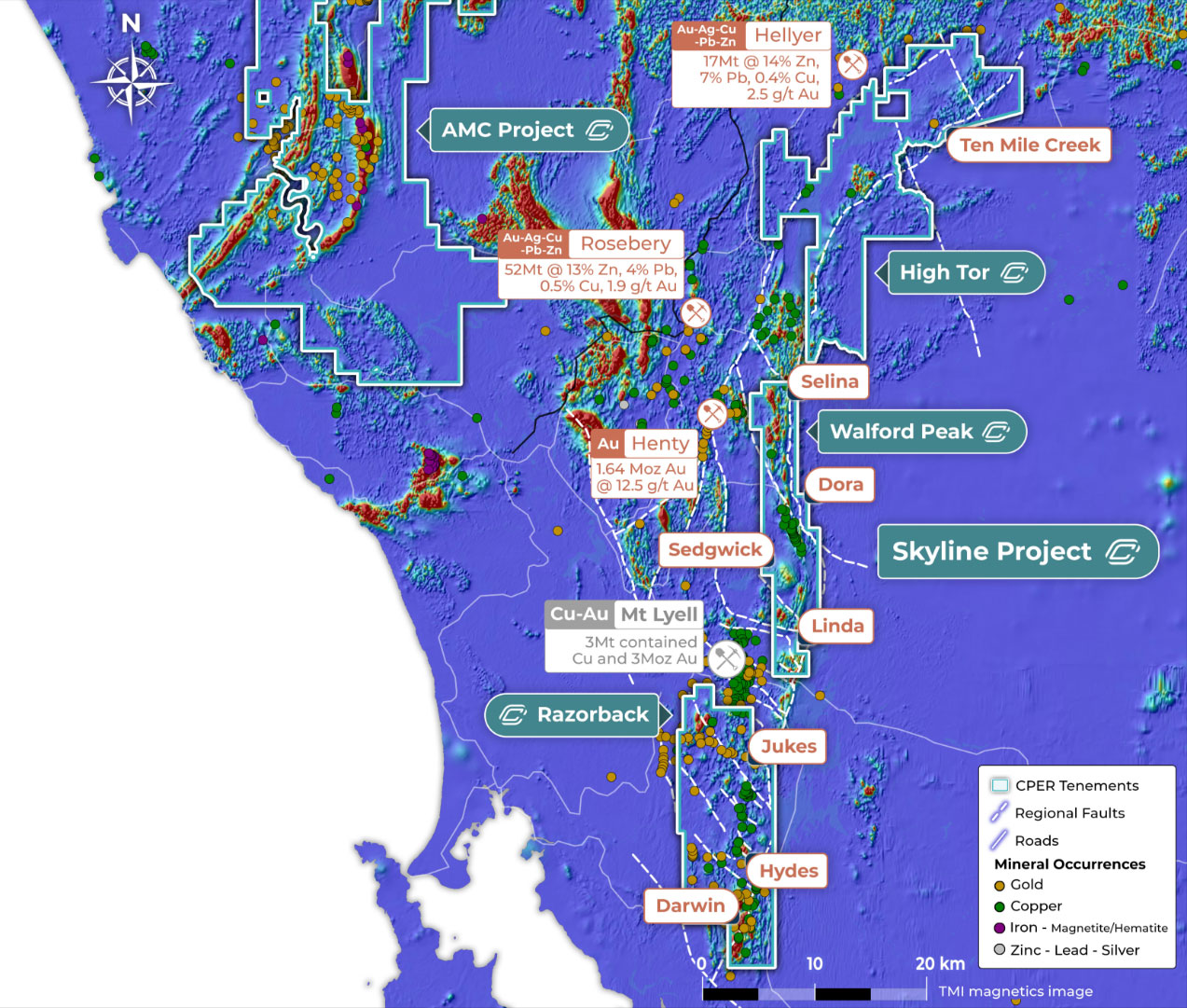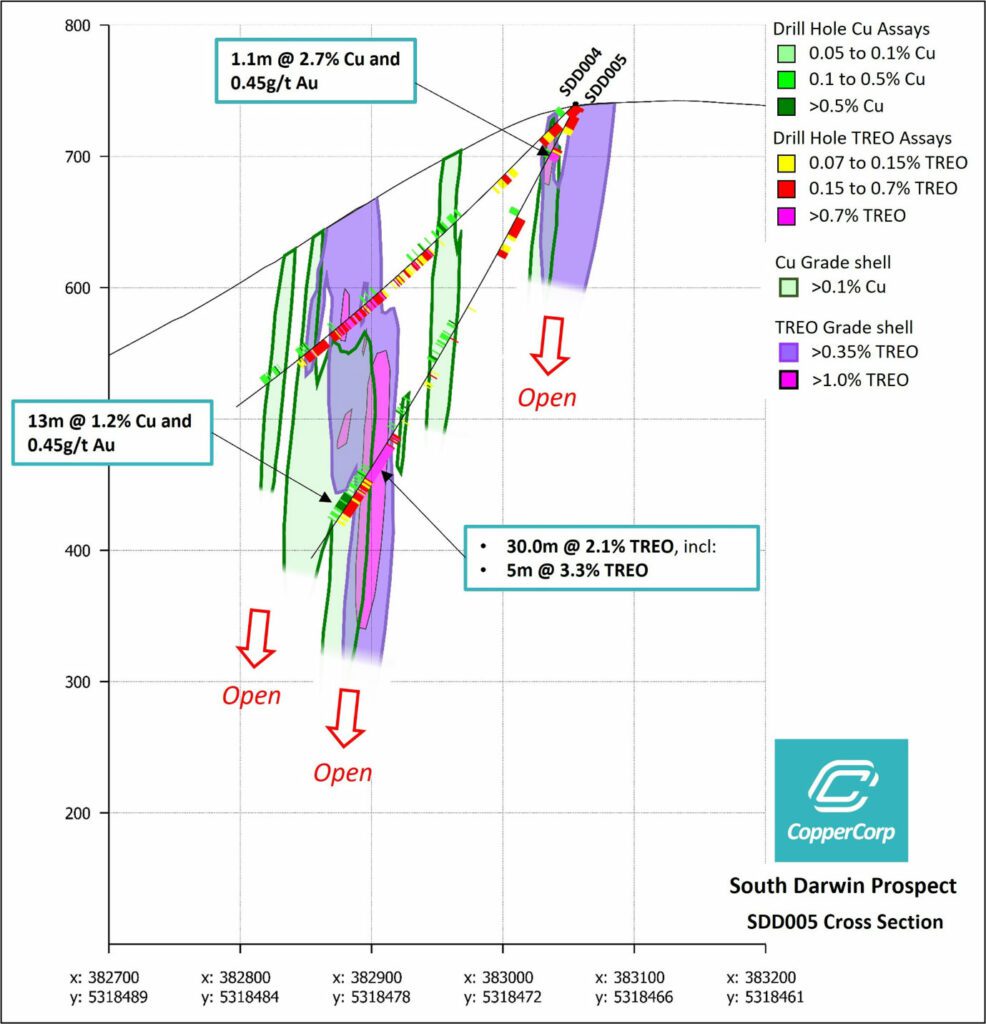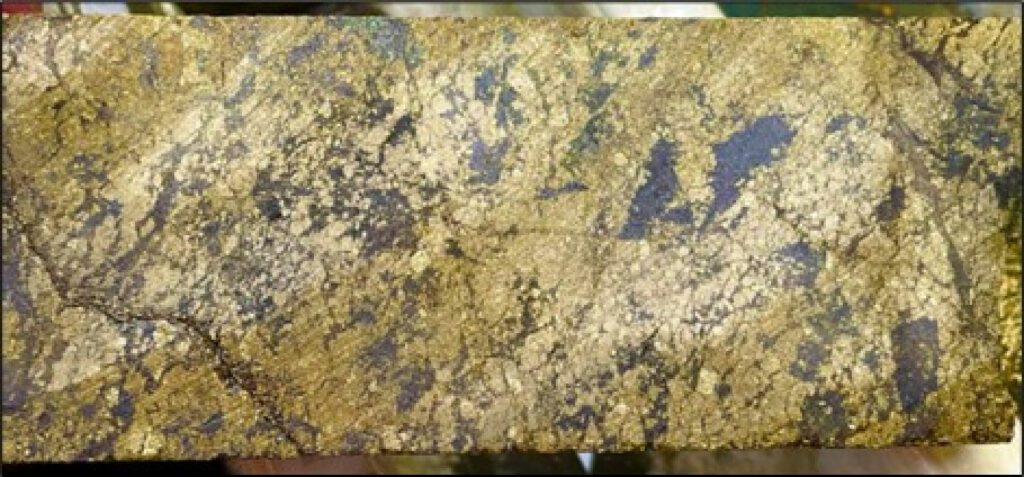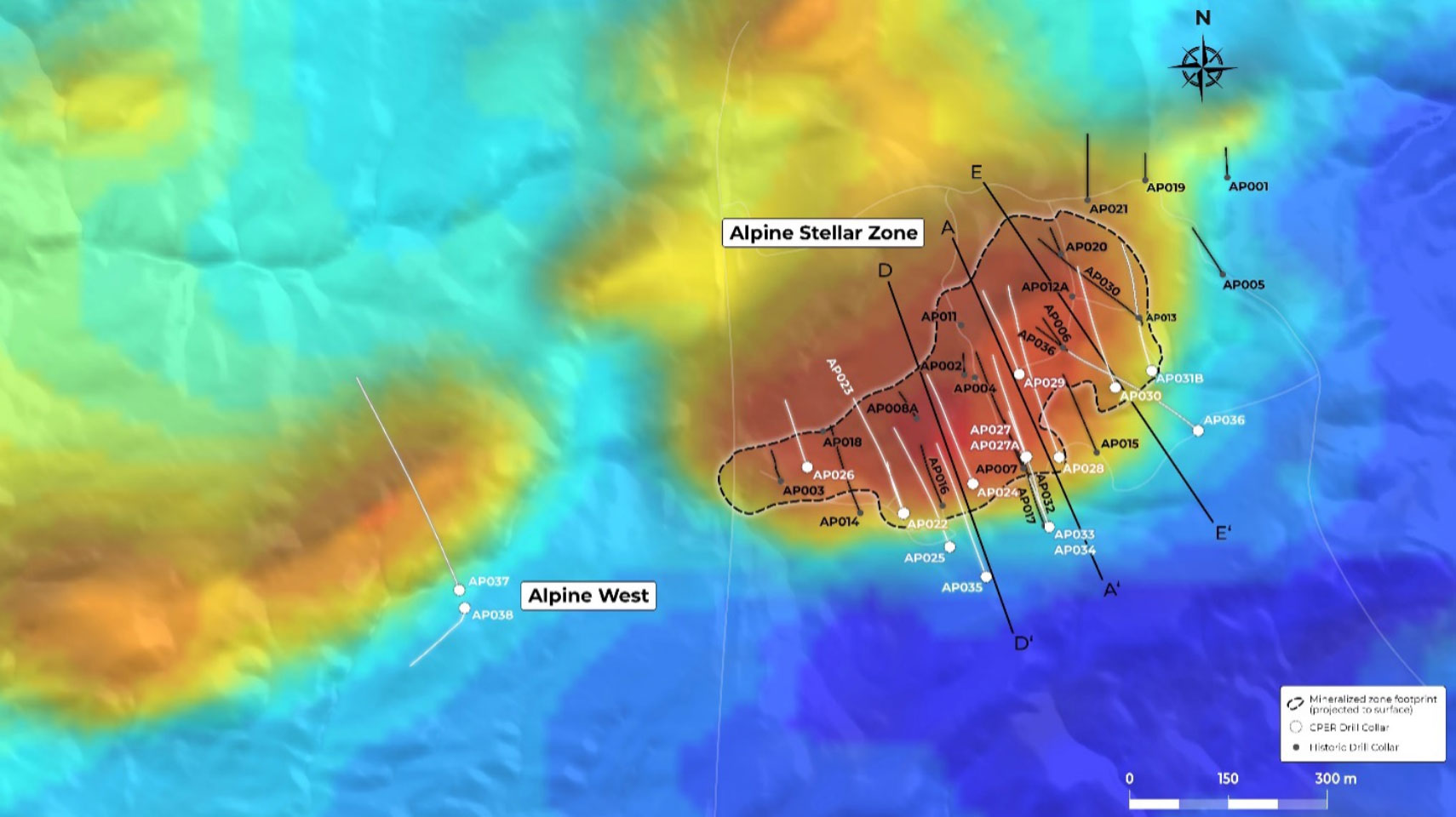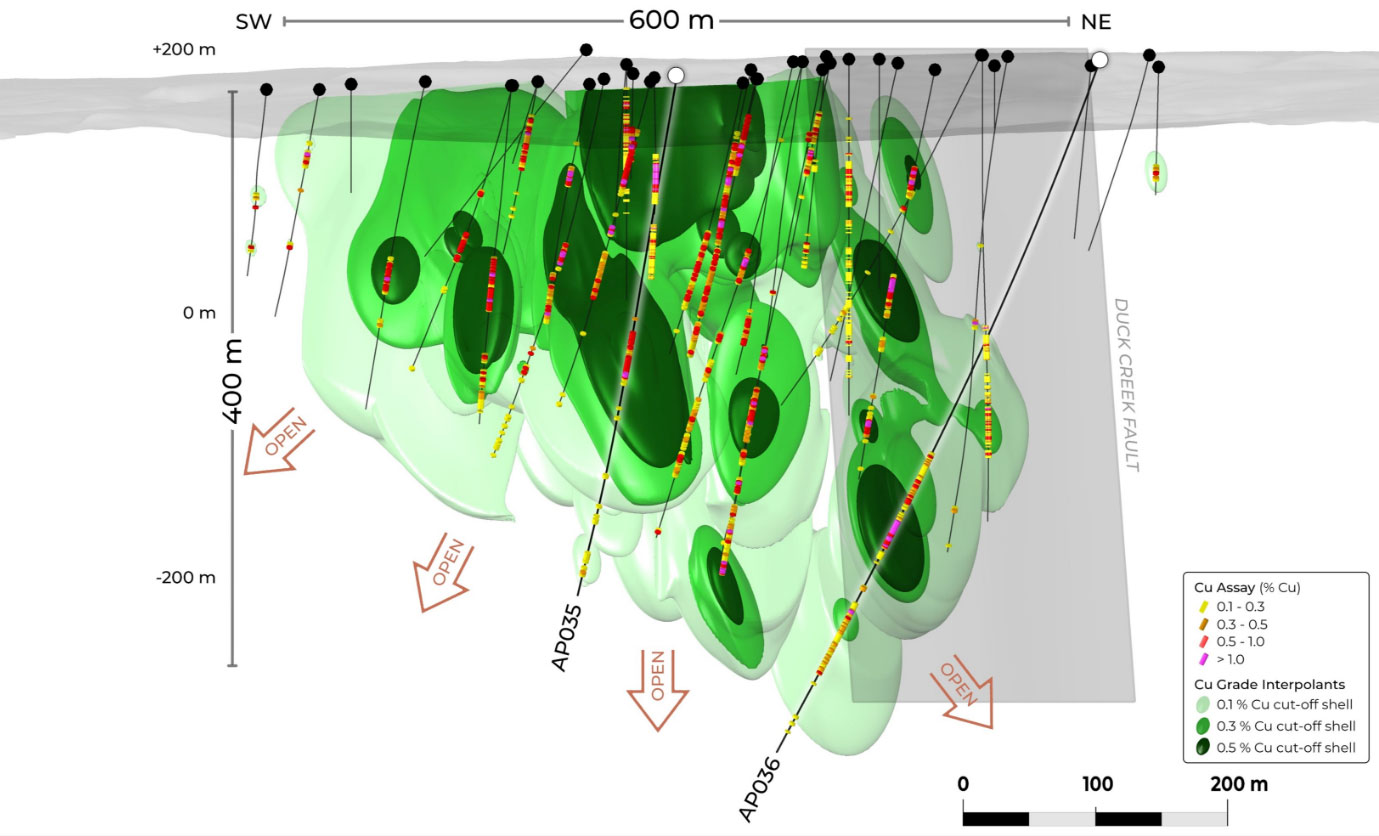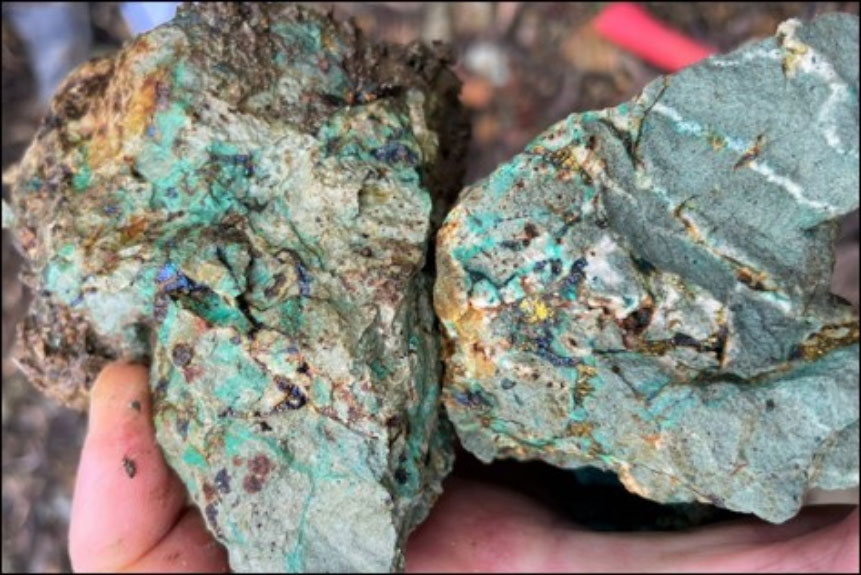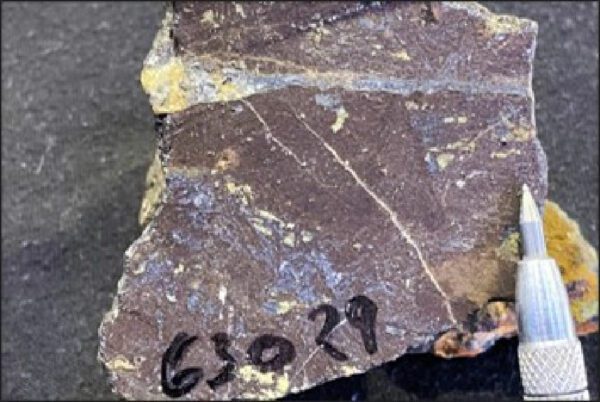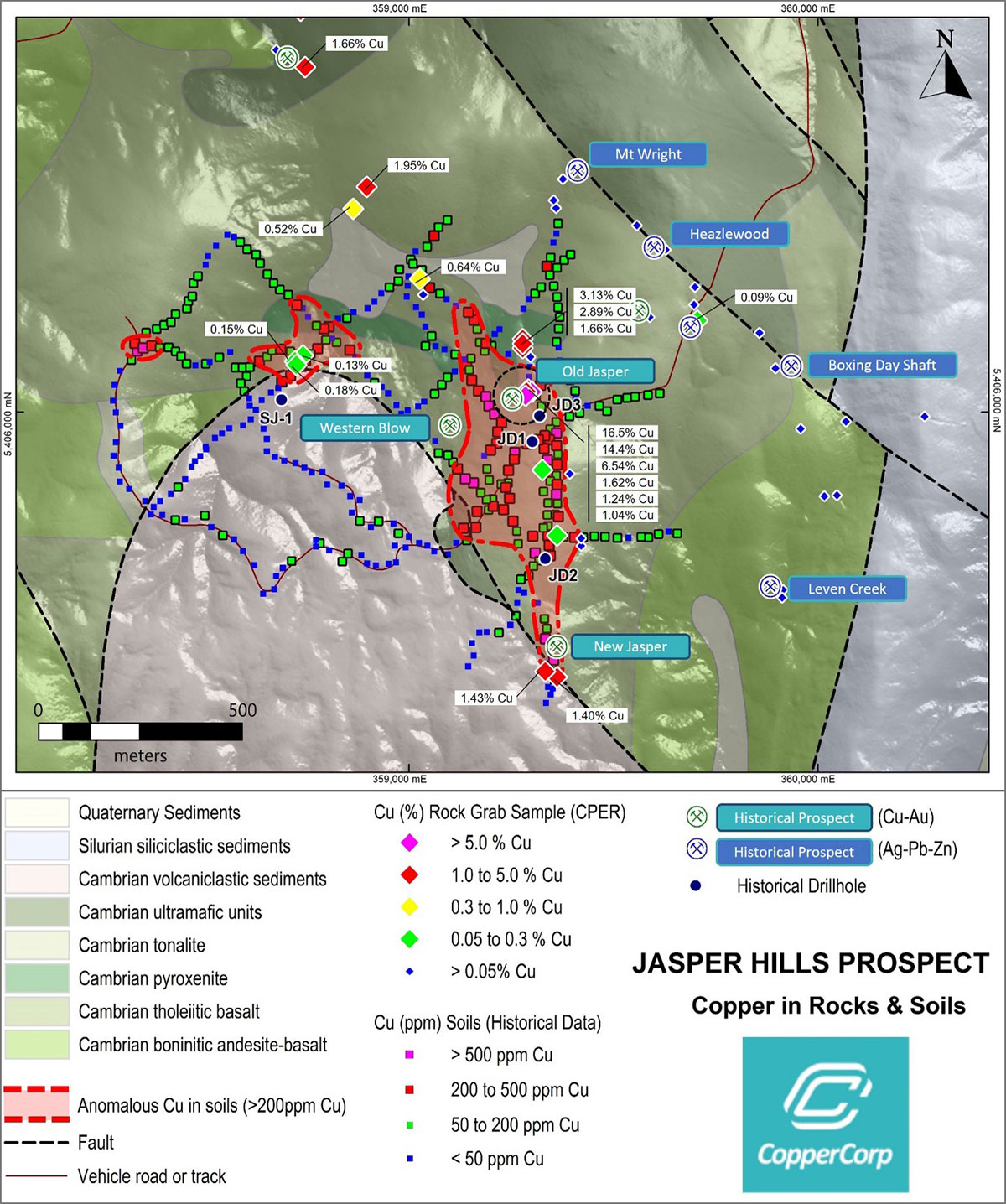Alpine Prospect
CopperCorp’s maiden drill program at Alpine focused on infill, extension, and step-out drilling to target thicker and higher-grade mineralization zones. To date, 17 holes have been completed, with notable intercepts of copper mineralization reported (see news section). The high-grade copper zones at the Alpine Stellar zone are associated with chalcopyrite mineralization in structurally controlled breccia zones and fracture vein networks. The company is conducting a geological review to refine the Alpine geological model for future drilling.
The Alpine prospect was discovered in the 1980s and saw historical drilling that intersected significant IOCG-style copper mineralization. The mineralization at Alpine is hosted in deformed and metamorphosed rocks, primarily amphibolites, mafic and pelitic schists, graphitic phyllites, and carbonates. Copper mineralization is associated with magnetite-hematite-siderite-sulphide lenses and chalcopyrite-pyrite breccia, vein, and disseminated mineralization.
The mineralization strikes east-northeast and dips steeply to the southeast, forming a fault-bound boudinage over 600m in strike length. The deposit remains open down dip and along strike to the west. Geophysical modeling indicates the presence of IOCG-style mineralization defined by coincident gravity and magnetic anomalies. The model also suggests additional areas of high IOCG prospectivity, including the Alpine West and Alpine North targets.
Drilling Highlights
- AP004: 28.2m @ 1.03% Cu from 58.7m (within 38.2m @ 0.79% Cu from 57.7m).
- AP030: 10.0m @ 1.20% Cu from 185.0m (within 37.0m @ 0.57% Cu from 181.0m).
- AP030: 4.9m @ 1.50% Cu from 3121m (within 18.0m @ 0.70% Cu from 307.0m).
- AP034: 5.0m @ 2.06% Cu from 187.0m (within 31.6m @ 0.64% Cu from 177.7m).
- AP035: 18.0m @ 0.90% Cu from 238m (within 45.0m @ 0.62% Cu from 217.0m).
- AP036: 23.0m @ 1.14% Cu from 393m (within 92.0m @ 0.50% Cu from 334.0m).
AP036 high-grade Cu mineralization (tray interval averaged 1.4% Cu) within: 23m @ 1.14% Cu from 393m (within wider zone: 92m @ 0.5% Cu from 334m)
AP034 high-grade Cu mineralization (chalcopyrite) in 1m interval (189-190m) grading 3.1% Cu within: 5m @ 2.06% Cu from 187m (within wider zone: 31.6m @ 0.64% Cu from 177.7m)
Alpine Stellar Zone
Strategy to expand mineralized footprint:
- Confirmed mineralization over 600m strike and to 400m depth below surface (OPEN)
- Drill permitting in process to target high-grade depth extensions
- Exploration along trend to expand resource footprint
Jasper Hills Prospect
The Jasper Hills prospect is located in Exploration License EL1/2020, about 10km east of Savage River magnetite mine and 35km northeast of CopperCorp’s Alpine prospect. The area is accessible via a sealed road and a network of 4WD tracks, with electrical transmission lines nearby.
The bedrock geology is mainly Cambrian mafic to ultramafic and volcanic-sedimentary sequences, with some Ordovician to Silurian, Tertiary, and Quaternary sediments, as well as Devonian-aged Meredith granite in the south.
Historically, mining began in the 1880s for silver, then copper after the discovery of outcropping copper mineralization around 1898. Small-scale mining was mainly for near-surface high-grade oxide lodes at Old and New Jasper mines until about 1920. Limited records indicate approximately 200 tons of copper ore and concentrates with about 20% Cu and 6g/t Au were produced. Additionally, around 300 tons of lead-silver-zinc ore were extracted from the Mt Wright-Heazlewood mines.
The copper-gold mineralization at Jasper Hills is found in veins and disseminated in altered basalt, pyroxenite, and sedimentary rocks. It is believed to be of Cambrian age and of primary magmatic/volcanogenic origin, possibly later remobilized during Devonian granite intrusion events.
Silver-lead-zinc prospects occur in a northwest-trending structural zone in altered mafic ultramafic rocks. These mineralized vein lodes are 1-5m wide, and were historically mined for high-grade silver. No drilling tests have been conducted on these prospects.
Tin mineralization wasn’t recognized in the area, but nearby significant tin mines exist.
Several companies have conducted exploration activities since the 1960s, but much of it was superficial. Limited historical drilling included 14 shallow RC holes and 4 diamond core holes between 1988 and 2013. Results were inconclusive due to various issues including drilling difficulties and not reaching target depths.
Multiple geophysical surveys have been performed and the Company is reviewing available open-source data.

